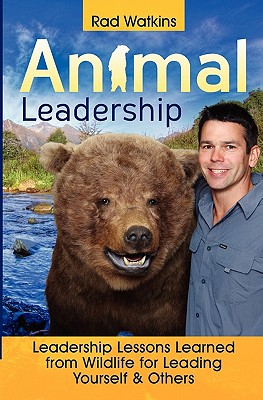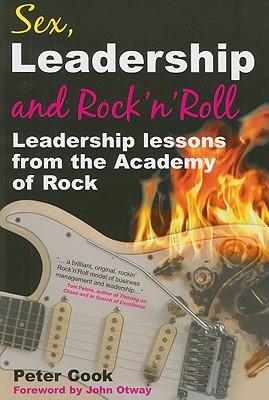I love crappy ideas and apparently other people do to. Leadership in particular is an area that seems to get a lot of attention. Maybe these hucksters think they can make a quick buck by selling a few books. Maybe they just think so little of leadership that they’re willing to brand it on anything. Whatever the reason, I find this leadership models disturbing and hilarious. Here are my top ten.

The author is given credit for admitting that the approach is “light-hearted” and for putting a graphic description right up front. As Novak explains, there are five elements to the model; the captain, the crew, the mission, the strategy, and the treasure. What I love most is that the entire book is filled with mysterious numbered lists. Lists like, “the four characteristics of an effective captain,” or, “the three principles of pirate strategy.” None of which seem to be connected to any larger conceptual framework (other than numerology). The whole thing reads like a series of leadership platitudes interspersed with lines from Pirates of the Caribbean. Favorite quote: “Do you know what is more powerful than cannon, cutlass, or pistol? Reputation. Aye, reputation.” (page 34). Read this if your ideal manager wears an eye patch and expects you to sit on his shoulder and repeat everything he says.

Part self-help fluff and part personality theory, Watkins capitalizes on our obsession with seeing human qualities in animals (and vice versa). His four “power animals” the bear, the wolf, the eagle, and the horse, comprehensively catalog and summarize the wide diversity of human traits, personality, behaviors, beliefs, skills, perspectives, contexts, and motivations. I won’t get into some of the more technical problems with these descriptions since it clearly isn’t meant to be taken too seriously. Favorite line: “The bear does not have the capabilities that allow it to communicate clearly. It is making decisions on the fly as to whether or not it needs to leave a situation, threaten severe consequences, or actually bring down the hammer. In the bear’s defense, even when they do maul people they rarely kill.” (page 13-14). There is little value here especially if one has successfully graduated from the 7th grade (or equivalent). Read this if you want to make the author’s grandmother feel like his career decisions weren’t “a delusional mistake.”

Jessamyn West once said, “fiction reveals truth that reality obscures,” and it when it comes to leadership theory it seems that some people would prefer to study imaginary people rather than real leaders. As with all of these models, there is some wisdom – some old wine in new HBO-branded wine skins, but the question then comes to mind: what was wrong with the old wine skins? Is the study of interpersonal and group dynamics just too boring? More than anything, this book is clearly an interpretive exercise for the author rather than a guide for questions about leadership. Favorite line: “I’m sure I would react skeptically if I heard about a book called Bart Simpson on Leadership or The Leadership Secrets of Ally McBeal.” (page xxvii). *please note the irony. Read this is you want something to plagiarize for your high school essay that you can be sure no one else will have read.

To be honest, this one isn’t a surprise. Star Trek fans are famously obsessive about their show. What I did find surprising was that the entire book was written as if it were Captain Jean-Luc Picard’s personal journal. This entry for example; “Captain’s personal journal: Observations on “Communication.” Stardate 45071.3 En route to Solarion IV.” (page 115). The entire book is written as a series of journal entries covering various missions and escapes in which the Captain was able to demonstrate his leadership skills. Not once does the book deviate from this style. The Captain even conveniently summarizes each journal entry with his own highlights about leadership (with the bold assumption that someone would actually make it to the end of a chapter). It contains almost no theory, very little practical advice, and even it’s title adage “Make it So” is never explained or expounded upon. All in all, this is one of the worst books on leadership you could hope to gag gift. Under no circumstance should you read this.

In general, I shied away from leadership models based on religious or historical figures. They typically fall into the “great man” theories of leadership which bestow almost supernatural powers to very mortal men (and they were always men). Not only do these theories typically ignore the complexities of historical context, but they place so much emphasis on innate character that leadership seems hardly worth developing. The Galbraiths eschew the second, but not the first by offering up the Rule of Saint Benedict, written for the administration of monastic living in southern Italy in 540 C.E. The problem is that running a monastery and running a modern organization have very little in common. Like the other authors, the Galbraiths spend so much time spinning straw into gold that they might have well just have written a book about their ideas of leadership rather than use a cover story. Favorite line: “When, therefore, a guest is announced, let him be met by the Superior and the brethern with every mark of charity. And let them first pray together, and then let them associate with one another in peace. This kiss of peace should not be given before a prayer hath first been said, on account of satanic deception.” (page 168). Read this if you’re the kind of person who understands what the hell that last sentence meant.

This is actually Wes Roberts second appearance on the list (he also wrote Make it So: Leadership Lessons from Star Trek) and following the Sopranos before it, the subject of this book is infamous for his ruthlessness. Strange nominations for models of leadership, these gangsters and tyrants prove that the power to lead doesn’t require good intentions. But that’s not my biggest problem with this book. I tried to avoid books on historical figures because they at least provide a little history lesson, but this book warrants its place on my list simply because of its historical inaccuracy. It reminds me of the great line by Moses Hadas, “This book fills a much needed gap.” There is nothing here but a series of leadership platitudes that are (thankfully) only loosely connected to Attila’s story. Read this if you are planning on becoming an author but fear that your ideas are far too stupid to ever get published.

The book opens with this sentence, “ Wouldn’t it be more than a little strange if the bestselling children’s books in modern times contained some of the deepest wisdom that contemporary business people need for successful careers, great relationships, and flourishing lives?” My answer is, “No, it’s not strange if you go looking for it.” I give this book some credit though, because using Harry Potter as a frame of reference is a smart choice. It’s an extremely popular story meaning that more people will be able to resonate with the leadership lessons. However, as with all of these models, the author has tried to bridge the gap between theory and story-telling, by writing a book that doesn’t do either very well. It’s equivalent to the old saying, “you can’t jump halfway across a hole.” Either gives us logical insights for leaders or tell us a story that shows us leadership (as in the original Harry Potter). Trying to explain it all is like trying to explain the punchline of a joke. Favorite fact: Amazon’s shows that people who bought this also bought, “Trees of the Northern United States and Canada.” Read this if you’re the kind of person who would prefer to get cooking advice from Chef Smurf and tax advice from Scrooge McDuck.

Toy Box Leadership mines children’s toys for leadership metaphors. It covers popular past times like the Slinky, Play-Doh, the yo-yo, the Rubik’s Cube, and even army men. I can’t help but think that time would be better spent watching the Toy Story trilogy. There are some great examples, like the connection between Light Brite as a way to demonstrate the ratio of signal to noise in a leader’s communication, but there is no fundamental leadership theory that supports it all. It’s just a la carte insights, which makes me wonder why you’d order from this menu of choices rather than a more conceptually robust meal that may actually connect to a large leadership development program. If you were looking for physical objects to supplement a workshop, then sure, this could be a useful book to help you identify some games. Favorite line: “You’ve probably seen it on a T-shirt or a bumper sticker: ‘He who dies with the most toys wins.’ It’s cute but false. The real truth about toys is this: when you live out the lessons these toys teach, you can win today.” It’s platitudes like this that make me question whether human evolution really exists or are we just running around in circles. Read this if you want to set up a coworker for a bet that you can get the boss to buy 100 Slinkies for the next corporate retreat.

Sex, Leadership, and Rock & Roll certainly has a provocative title, but fails to fulfill that curiosity. The essential argument of this book is that we no longer live in the “orchestral age,” but rather a “rock-and-roll age,” in which our ideas of leadership should evolve accordingly. As a metaphor this is weak enough, but considering that the book was published in 2006 (rather than 1955) it makes me wonder just how many years the author had been working on it. Judging from passages like, “Leaders make and engage others with strategic decisions under conditions of high uncertainty of means, ends or both means and ends, (pg. 111)” I think he didn’t work quite long enough. There are some unique gems including a list of “Rock tips for high performance,” which state without any further explanation “get hair – in business this is called ‘grooming,'” “Build a massive wall in Berlin, a la Pink Floyd,” and ” Burn guitars after making love to them.” Of course it also includes the usual bromides about motivation, teamwork, decision-making, and vision presumably to help librarians decide where to shelve it. All in all, the whole thing reads like a bad acid trip, which is precisely as bizarre and as unsatisfying as it sounds. Read this if you run a methadone clinic for CEOs.

This is probably the best bad book on leadership I’ve ever read. For starters, the book is written in first person. As in, Santa Claus is speaking directly to the reader. “Another year, I had two reindeer come down with the flu right after Prancer pulled the plug, retired, and took off for Florida. That left me with a thirty-three percent delivery staff reduction (if you count Rudolph) with no immediate replacements (pg. 7).” Second, the book is filled with more empty aphorisms like “Make a list and check it twice,” and “listen to the elves.” There is not a single original thought in all of its 85 pages (the last 10 of which advertise the different “Santa Claus Leadership” courses and tools. There is truly nothing of value here, but I’m left wondering to whom were they marketing this book. Kids? Executives? I just don’t get it. Books like this lessen the credibility of leadership studies and frankly, they even lessen the credibility of Santa Claus. Read this if all other books have been burned up in an apocalyptic elf revolt and your gingerbread optometrist requires that you read something, anything, to maintain your vision.
—
So there you have it. 10 awful leadership models. What is it that compels us to see leadership lessons in everything that we do? Could it be that our need for true leadership has gotten so bad that we’d look to anything to find it? A horse, a make-believe wizard… Play-Doh? Is this really the best we can do?
MORE AWFUL LEADERSHIP
My Little Pony and Leadership
http://www.succeedtolead.org/pdfs/articles/leadership/pony_crawford.pdf
Viking Leadership
http://timmarks.com/blog/viking-leadership/
Five Leadership Lessons from Batman
http://www.forbes.com/sites/alexknapp/2012/07/30/five-leadership-lessons-from-christopher-nolans-batman-trilogy/
Leadership Lessons of Indiana Jones
http://www.refreshleadership.com/index.php/2011/11/lessons-indiana-jones/
4 Leadership Lessons from the Lord of the Rings
http://www.forbes.com/sites/geoffloftus/2012/07/18/4-leadership-lessons-from-aragorn/
Leadership Lessons from the Toilet Seat
http://www.perrynoble.com/blog/leadership-lessons-from-the-toilet-seat
Muppet Leadership
http://dailygenius.wordpress.com/2013/01/02/introducing-muppet-leadership/
Superhero Leadership
http://www.tonycooke.org/free_resources/articles_leadership/leadership_superheroes.html
Leadership Lessons of Kung FU Panda
http://grafsata.wordpress.com/2009/01/28/leadership-lessons-of-the-kung-fu-panda/
Shrek: Leadership Lessons
http://www.getnside.com/atx/magazine/business/032011/articles/2054-Shrek_A_True_Executive_Leader/
Pee Wee Herman and Leadership
http://www.starkscommunications.com/speechwriting/speechwriter-embraces-pee-wee-hermans-philosophy/
Leadership Lessons from Moby Dick
http://www.inc.com/samuel-bacharach/your-own-private-whale-leadership-lessons-from-moby-dick.html
Six Leadership Lessons from Deadliest Catch
http://www.forbes.com/sites/forbesleadershipforum/2012/10/19/six-leadership-lessons-from-the-crews-on-deadliest-catch/
Leadership Lessons from the Godfather
http://www.fastcompany.com/1826672/offer-you-cant-refuse-leadership-lessons-godfather
Star Wars Leadership Lessons
http://www.forbes.com/sites/erikaandersen/2012/02/24/star-wars-leadership-lessons-even-geeks-need-guidance/
Tags: Leadership









